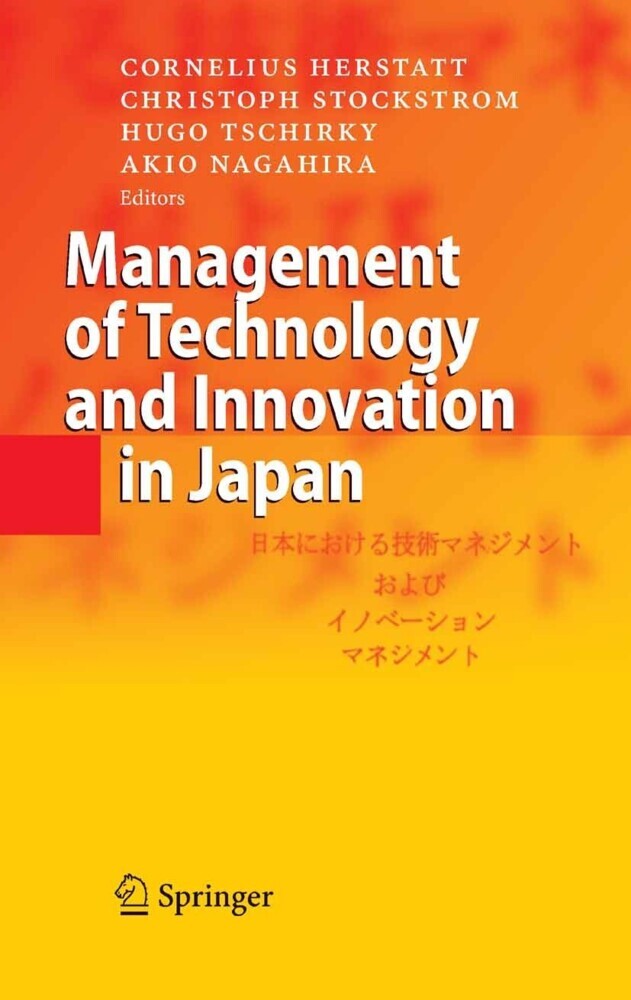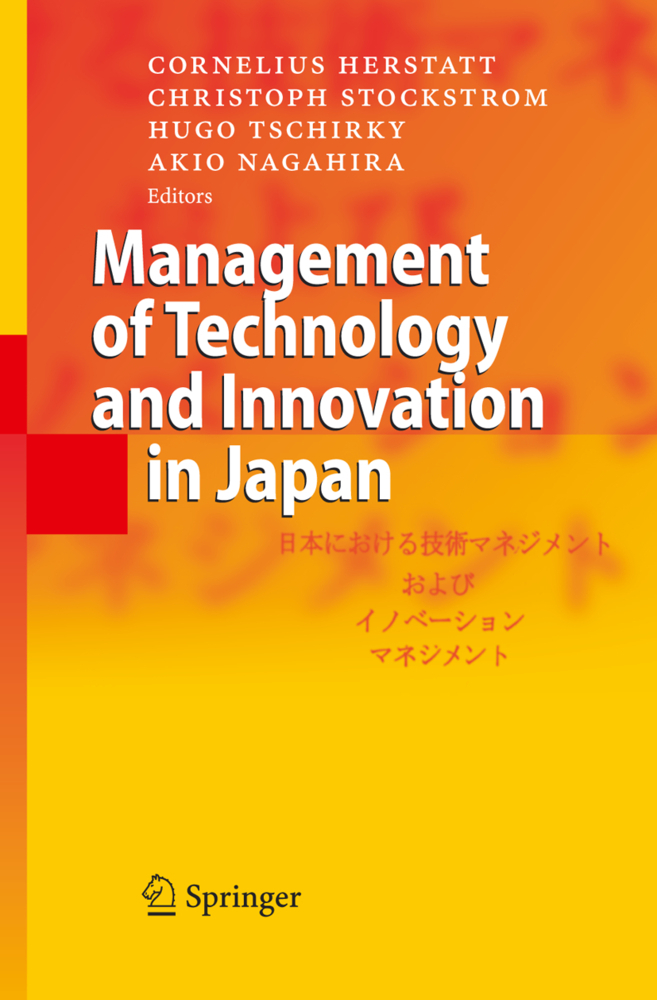Management of Technology and Innovation in Japan
This book provides a profound overview of Japanese ways of managing innovation, looking at various relevant levels such as strategy, processes, organization, culture and implementation. Within this framework, contributions by both researchers and practitioners deal with aspects such as the fuzzy front-end of innovation, the role of knowledge in new product development, supplier integration, product architecture, multi-project management and intellectual property rights issues. Case studies serve to illustrate how new product development projects are carried out in Japan and comparisons with practices in Western countries allow for the identification of differences and similarites between management practices in these different cultural regions.
1;Preface and Introduction;6 2;Table of Contents;20 3;List of Contributing Authors;22 4;Part I: Strategic Aspects;25 4.1;Designing the Product Architecture for High Appropriability: The Case of Canon --- Kiyonori Sakakibara and Yoichi Matsumoto;27 4.1.1;The Issue of Appropriability;27 4.1.2;Characteristics of the Business Performance of Canon;28 4.1.3;Cartridge Technology that Sustains Copier's High Profitability;29 4.1.4;Analysis of the Ink Jet Printer Business in Japan;32 4.1.5;Concluding Remarks;47 4.1.6;Appendix 1: The List of Product Specifications;49 4.1.7;Appendix 2: The Icons' List of Exchange Cartridge;50 4.1.8;References;50 4.2;Case Study Shimano: Market Creation Through Component Integration --- Akira Takeishi and Yaichi Aoshima;53 4.2.1;Introduction;53 4.2.2;Outline and History of Shimano Bicycle Component Business;55 4.2.3;Shimano's Position in Bicycle Parts - "The Intel of the Bicycle Industry";56 4.2.4;History;59 4.2.5;History of Product Innovation;60 4.2.6;Shimano's Strategy: Creating Markets Through Component Integration;68 4.2.7;Production Technology and Market Creation;69 4.2.8;Conclusion: Searching for New Growth Opportunities;71 4.3;Invisible Dimensions of Innovation: Strategy for De-commoditization in the Japanese Electronics Industry --- Ken Kusunoki;73 4.3.1;Digitization, Modularization, and Commoditization;73 4.3.2;Visibility of Innovation Dimension and Its Dynamics;75 4.3.3;Limits of Visible Innovations;78 4.3.4;Invisible Innovations: An Alternative Strategy;82 4.3.5;The Visibility Trap;87 4.3.6;Seeing and Showing Invisible Dimensions;90 4.3.7;Conclusions;95 4.4;The Customer System and New Product Development: The Material Supplier's Strategy in Japan --- Junichi Tomita and Takahiro Fujimoto;97 4.4.1;Introduction;97 4.4.2;Customer System;98 4.4.3;Case Study - Development of LUMIFLON at AGC;101 4.4.4;Management of Customer System;105 4.4.5;References;107 5;Part II: Process Aspects;109 5.1;The Japanese Know-Who Based Model of Innovation Management - Reducing Risk at High Speed --- Sigvald J. Harryson;111 5.1.1;From Time-Based Competition to Time-Based Innovation;111 5.1.2;Introducing a Know-Who Based Approach to Networking;114 5.1.3;Canon's Know-Who Based Approach to Commercializing a Disruptive Display Technology;119 5.1.4;Analyzing the Canon Case with Further Illustrations of Know-Who Based K&I Management;128 5.1.5;References;132 5.2;The Domestic Shaping of Japanese Innovations --- Marian Beise;137 5.2.1;Introduction;137 5.2.2;Conclusions;161 5.2.3;References;162 5.3;Exploiting "Interface Capabilities" in Overseas Markets: Lessons from Japanese Mobile Phone Handset Manufacturers in the US --- Masanori Yasumoto and Takahiro Fujimoto;167 5.3.1;Introduction;167 5.3.2;Background;168 5.3.3;Distinction Between Interface Capabilities and Relational Knowledge;169 5.3.4;Overview of Japanese Mobile Phone Manufacturers;172 5.3.5;Handset Development Strategy of Japanese Manufacturers;175 5.3.6;Japanese Mobile Phone Manufacturers in the US;176 5.3.7;Sanyo;178 5.3.8;Discussion;185 5.3.9;Conclusion;186 5.3.10;Acknowledgement;187 5.3.11;References;187 5.4;"Fuzzy Front End" Practices in Innovating Japanese Companies --- Cornelius Herstatt, Birgit Verworn, Christoph Stockstrom, Akio Nagahira, and Osamu Takahashi;191 5.4.1;Introduction;191 5.4.2;Study;191 5.4.3;Results;194 5.4.4;Comparing Successful and Unsuccessful Companies;199 5.4.5;Conclusions;205 5.4.6;References;205 5.5;Implementing Process Innovation - The Case of the Toyota Production System --- René Haak;209 5.5.1;Introduction;209 5.5.2;Technology and Knowledge Transfer;211 5.5.3;The Company: A Whole System;212 5.5.4;Tools for Solving Problems;217 5.5.5;Kaizen - Core of Toyota Production System and Embodiment of Organizational Learning;221 5.5.6;References;222 6;Part III: Organizational Aspects;229 6.1;Reorientation in Product Development for Multiproject Management: The Toyota Case --- Kentaro Nobeoka;231 6.1.1;Introduction;231 6.1.2;Multi-project Management:
Herstatt, Cornelius
Stockstrom, Christoph
Tschirky, Hugo
| ISBN | 9783540312482 |
|---|---|
| Artikelnummer | 9783540312482 |
| Medientyp | E-Book - PDF |
| Auflage | 2. Aufl. |
| Copyrightjahr | 2006 |
| Verlag | Springer-Verlag |
| Umfang | 406 Seiten |
| Sprache | Englisch |
| Kopierschutz | Digitales Wasserzeichen |











